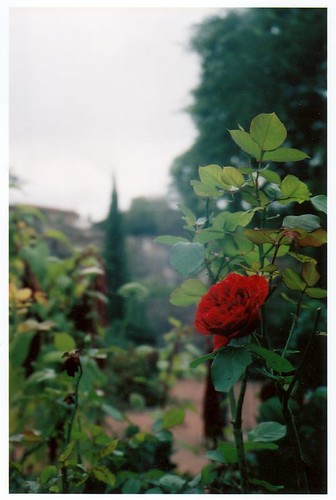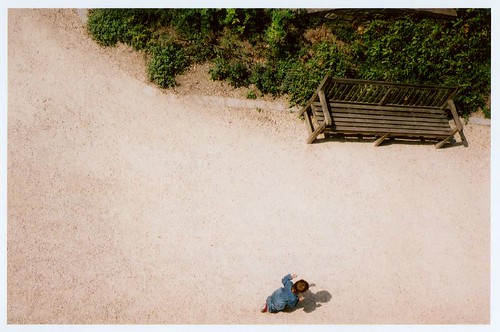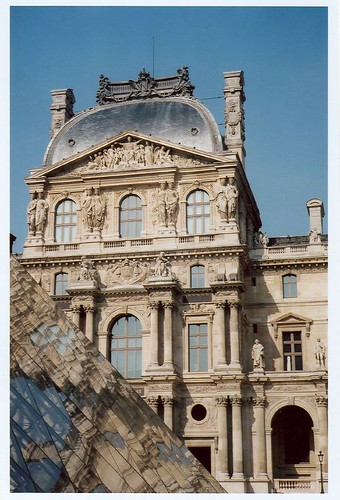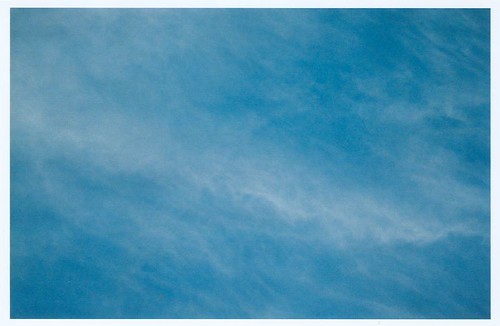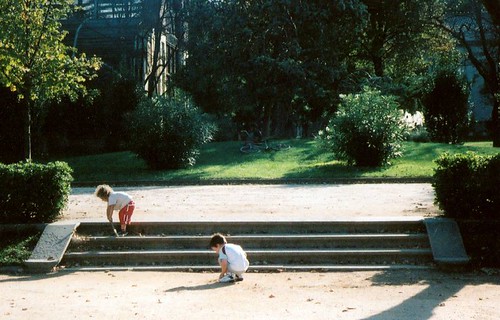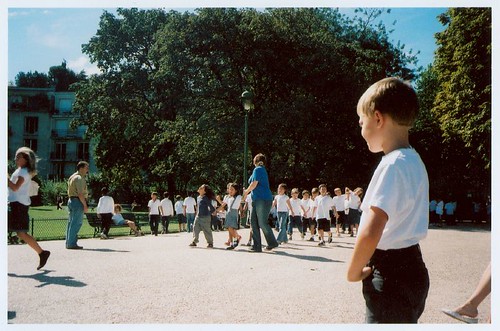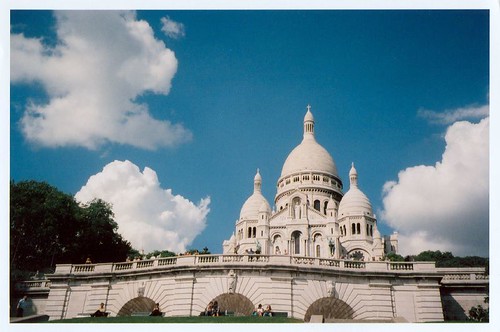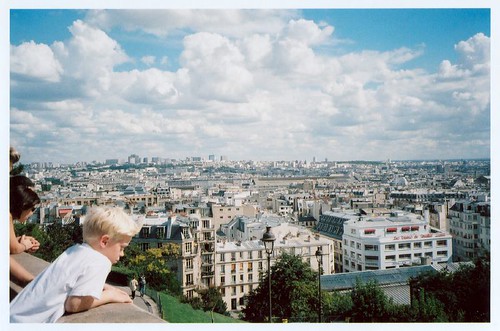18 Septembre
Staying out late in the Marais = missing the train to Lyon. Luckily, there was another TGV just 30 minutes later. I made my way through Lyon to our hotel to discover it was really quite nice, considering we only paid 67 euros. Bright, spacious rooms.
Vieux Lyon and Fouriere Hill are charming and full of history. The Basilique Notre-Dame de Fouriere is exquisitely detailed. The views from atop the hill are splendid, although the wind is quite brisk on this mid-September afternoon. On a clear day you can see Mt Blanc, 200 km to the east.
Fourvière Hill contains the oldest roman ampitheatre in France. The discoveries came while starting additional development to the area. I picked up some Medoc grapes, pain du champagne, peaches and some pastries at the local open air market. Easily the most flavorful grapes I've ever tasted. Later, I spent some time in the gardens around the old ruins.
Staying out late in the Marais = missing the train to Lyon. Luckily, there was another TGV just 30 minutes later. I made my way through Lyon to our hotel to discover it was really quite nice, considering we only paid 67 euros. Bright, spacious rooms.
Vieux Lyon and Fouriere Hill are charming and full of history. The Basilique Notre-Dame de Fouriere is exquisitely detailed. The views from atop the hill are splendid, although the wind is quite brisk on this mid-September afternoon. On a clear day you can see Mt Blanc, 200 km to the east.
Fourvière Hill contains the oldest roman ampitheatre in France. The discoveries came while starting additional development to the area. I picked up some Medoc grapes, pain du champagne, peaches and some pastries at the local open air market. Easily the most flavorful grapes I've ever tasted. Later, I spent some time in the gardens around the old ruins.

17 Septembre
Although I rose early, I missed the Toulouse-Lyon TGV. So, I decided to head back to Paris. During the past few days I though about my first images from Paris. I'm writing this from Jardin du Luxembourg, again at sundown.
The weather is perfect - low 60's, clear sky, few clouds by the horizon, light breeze. It's a bit like the warm smile on a friend's face after being away for a while.
The sun is warm. I dip my toes in the fountain.
Musee d'Orsay. Mary Cassat's 'Jeune fille au jardin, Henri Edmund Cross' 'Iles d'Or', and Paul Signac's 'Le chateau des Papes' were thoughful, moving, and breathtaking.
On the second floor of the Musee Rodin, I could see the courtyard. A small boy named Toto was running to the call of his parents.
Earlier that day, I toured the grounds of the Louvre.
There's a scene in Godard's 'In Praise of Love' where Edgar and Elle are walking by Pont Neuf. Spotting a plaque on the bridge, Elle says she doesn't like how it's phrased. She responds: "... Killed by the Germans. It shouldn't say that." It took a bit of time, but eventually I found it.
Although I rose early, I missed the Toulouse-Lyon TGV. So, I decided to head back to Paris. During the past few days I though about my first images from Paris. I'm writing this from Jardin du Luxembourg, again at sundown.
The weather is perfect - low 60's, clear sky, few clouds by the horizon, light breeze. It's a bit like the warm smile on a friend's face after being away for a while.
The sun is warm. I dip my toes in the fountain.
Musee d'Orsay. Mary Cassat's 'Jeune fille au jardin, Henri Edmund Cross' 'Iles d'Or', and Paul Signac's 'Le chateau des Papes' were thoughful, moving, and breathtaking.
On the second floor of the Musee Rodin, I could see the courtyard. A small boy named Toto was running to the call of his parents.
Earlier that day, I toured the grounds of the Louvre.
There's a scene in Godard's 'In Praise of Love' where Edgar and Elle are walking by Pont Neuf. Spotting a plaque on the bridge, Elle says she doesn't like how it's phrased. She responds: "... Killed by the Germans. It shouldn't say that." It took a bit of time, but eventually I found it.
16 Septembre
Toulouse surprised me. Meant to be nothing more than a pit stop in our meandering from city to city, it was stimulating. The older parts of the city were full of youth, energy and reassurance. And as a reminder, the town kept some of the remains of buildings bombed during the second world war.
Aftering viewing the Jacobins and the remains of Thomas Aquinas, I spent about two hours at the Fondation Bemberg (http://www.fondation-bemberg.fr/), a splendid and thorough collection of 17-19th century art including pointilism, impressionism, 16th century Venetian art, collections of rare books, and more. The 2nd floor was composed of works from the modern French school.
- Louis Leopold Boilly "La lettre" (1787)
- Pierre Bonnard "Marine" (1910)
- Paul Cezanne "Passage montagneux des environs d'Aix" (1890-1895)
- Johannes Covens "Table setting"
- Paul Gaugin "Tete de jeune paysan"
- Stanislav Lepine "Vue de la Seine et du Trocadero a le pont de Grenelle"
- Henri Matisse "Vue d'Antibes" (1925)
- Claude Monet "Bateaux sur la plage Etretat" (1883)
- Auguste Renior "Portrait de jeune fille"
- Auguste Rodin "L'age d'Airain" (1876)
- Louis Valtat "Les rochers rouge"
The early evening was spent in the main square, around the Capitolium. Henri Guerin's works of stained glass, in the Capitolium, moved me. He wrote that "to create is the sovereign act of life." (http://www.henri-guerin.com/). I enjoyed a lengthy dinner and strolled the older streets.
Toulouse surprised me. Meant to be nothing more than a pit stop in our meandering from city to city, it was stimulating. The older parts of the city were full of youth, energy and reassurance. And as a reminder, the town kept some of the remains of buildings bombed during the second world war.
Aftering viewing the Jacobins and the remains of Thomas Aquinas, I spent about two hours at the Fondation Bemberg (http://www.fondation-bemberg.fr/), a splendid and thorough collection of 17-19th century art including pointilism, impressionism, 16th century Venetian art, collections of rare books, and more. The 2nd floor was composed of works from the modern French school.
- Louis Leopold Boilly "La lettre" (1787)
- Pierre Bonnard "Marine" (1910)
- Paul Cezanne "Passage montagneux des environs d'Aix" (1890-1895)
- Johannes Covens "Table setting"
- Paul Gaugin "Tete de jeune paysan"
- Stanislav Lepine "Vue de la Seine et du Trocadero a le pont de Grenelle"
- Henri Matisse "Vue d'Antibes" (1925)
- Claude Monet "Bateaux sur la plage Etretat" (1883)
- Auguste Renior "Portrait de jeune fille"
- Auguste Rodin "L'age d'Airain" (1876)
- Louis Valtat "Les rochers rouge"
The early evening was spent in the main square, around the Capitolium. Henri Guerin's works of stained glass, in the Capitolium, moved me. He wrote that "to create is the sovereign act of life." (http://www.henri-guerin.com/). I enjoyed a lengthy dinner and strolled the older streets.
15 Septembre
With the warmth of the Spanish sun, I feet right at home in Barcelona... from the friendly people to the festival like atmosphere on the beaches and the beautiful tanned girls.
During the day I walked the old part of the city, spent some time at the beach, and view the Picasso museum, tour a couple public gardens and an old church. As I walk down the streets, a few old men play bocci ball.
In the evening, I stroll the busy streets and stop for some mojitos at a place called Q-bar. After smoking outside with a stranger, I strike up a conversation with an older English couple. I listen to their stories from past travels. The woman speaks with great detail, and being a mother, illuminates the story behind her husband's stories.
With the warmth of the Spanish sun, I feet right at home in Barcelona... from the friendly people to the festival like atmosphere on the beaches and the beautiful tanned girls.
During the day I walked the old part of the city, spent some time at the beach, and view the Picasso museum, tour a couple public gardens and an old church. As I walk down the streets, a few old men play bocci ball.
In the evening, I stroll the busy streets and stop for some mojitos at a place called Q-bar. After smoking outside with a stranger, I strike up a conversation with an older English couple. I listen to their stories from past travels. The woman speaks with great detail, and being a mother, illuminates the story behind her husband's stories.
14 Septembre
My friend arrived this morning. I walked to the market in Biarritz and picked up some fresh fruit and pastries for breakfast. He was a bit tired from the morning journey, so we walked down to the beach, relaxed, and slept in the sun.
Later in the day, we took a long walk along the coast. The area is a popular surfing location, we noticed people from Germany and the Netherlands. The sunset was amazing, the sky was illuminted by a brilliant pink. The water was a dreamy pinkish blue.
After sunset, we walked back into town and had some paella and wine at Le Paladium. Content yet sleepy, we walked to a beachside cafe named Le Bleu and had some espresso.
15 Septembre
Our goal on Monday was to 1) get to Bilbao, 2) see the Guggenheim, and 3) take the overnight train to Barcelona. The journey started off with the 11:25 am bus to St Jean de Luz, a coastal town just to the south of Biarritz. Next, we had to hop a few trains to Hendayne, San Sebastian, and finally we boarded the train to Bilbao.
Spain doesn't have the most comfortable trains. This sentiment would only be affirmed during our overnight train to Barcelona. We arrived in Bilbao in the mid-afternoon, oriented ourselves, and toured the Guggenheim. The main exhibit was "Matter of Time", large, curved, installations (30 feet tall, by 70 feet wide at some points) meant to give the visitor a a different perspective on movement and time. There was also ancient Aztec art, I found a few items on loan from Washington galleries. An exhibit on the history and development on abstract expressionism rounded out the experience. We sat outside and photographed the Guggenheim's unique architecture.
My friend arrived this morning. I walked to the market in Biarritz and picked up some fresh fruit and pastries for breakfast. He was a bit tired from the morning journey, so we walked down to the beach, relaxed, and slept in the sun.
Later in the day, we took a long walk along the coast. The area is a popular surfing location, we noticed people from Germany and the Netherlands. The sunset was amazing, the sky was illuminted by a brilliant pink. The water was a dreamy pinkish blue.
After sunset, we walked back into town and had some paella and wine at Le Paladium. Content yet sleepy, we walked to a beachside cafe named Le Bleu and had some espresso.
15 Septembre
Our goal on Monday was to 1) get to Bilbao, 2) see the Guggenheim, and 3) take the overnight train to Barcelona. The journey started off with the 11:25 am bus to St Jean de Luz, a coastal town just to the south of Biarritz. Next, we had to hop a few trains to Hendayne, San Sebastian, and finally we boarded the train to Bilbao.
Spain doesn't have the most comfortable trains. This sentiment would only be affirmed during our overnight train to Barcelona. We arrived in Bilbao in the mid-afternoon, oriented ourselves, and toured the Guggenheim. The main exhibit was "Matter of Time", large, curved, installations (30 feet tall, by 70 feet wide at some points) meant to give the visitor a a different perspective on movement and time. There was also ancient Aztec art, I found a few items on loan from Washington galleries. An exhibit on the history and development on abstract expressionism rounded out the experience. We sat outside and photographed the Guggenheim's unique architecture.
12 Septembre
I arrived in Biarritz by train at six in the morning. The sky was clear, save for a a few wispy clouds, but it was encouraging to see the stars again. After walking about a mile, I arrived at the beach. The waves were about chest high, but the swell seemed to be fading. The wind was blowing offshore about 5-10 miles per hour. As the sun began to stir from its sleep, a girl stop[ed to talk to me for a bit. She found it funny that I was just staring at the ocean.
My friend hadn't arrived from Paris yet, so my days were spent relaxing in the mid-September warmth of the southeastern French coast. Gradually, the winds began to change and a storm moved in. I walked out to the outer rocks that extended several hundred yards into the sea. The sea was alive and furious, as the waves pounded the coast and rocks. Quite a number of people gathered out on the rocks to brave the weather.
As the storm began to lose its intensity, I gazed south for my first glimpses of the Spanish coast. This photo looks past Anglet, St Jean-de-Luz, and towards San Sebastian.
Most of my time in Biarritz was spent alone, thus, affording me some time for reflection. There was an oceanside cafe where I spent a number of hours reading. A beautiful British girl, in the midst of having some beers with her friends, walked over and said "You're reading...". I wasn't sure how to respond, so I just said that someone had to.
I finished Cinema: Memory of a Century, which is a long conversation between Jean-Luc Godard and Youseff Ishaghpour. Using Godard's lengthy film project "Historie(s) de cinema" as a starting point, they discuss Godard's take on the 20th century, history of cinema, relation to literature and other art, and the concentration camps, among other things. He also noted that the 20th century was the age of mass production and copying, obviously, but he placed the logic on the mass production of horrors, too - first and second world wars, Sarajevo, genocides, concentration camps, etc. Though examples such as these, Godard and Ishaghpour assemble the notion of cinema as not just a history, but the history of the 20th century. While literature address the camps, cinema was almost completely silent, in fact, Godard wrote that, referring to mainstream cinema, thought ceased at Aushwitz.
Then, the New Wave... Id mainstream cinema's thought was it's form, the "ugly child of cinema" the french new wave, its thought was the thought on form.
It's nice to read Godard talk about Henri Langois and growing up in the Paris museums. Unlike so many others, Godard's films contain an immense amount of explicit and subtly hidden references to past filmmakers, artists, poets, writers, activists, and their thoughts. It's easy to see how he was a film critic before he was a film maker. Every Godard film, book, or interview I've seen, read, or observed is an exercise in intellect, but also a history lesson.
Time passed. I looked forward to my friend's arrival.
I arrived in Biarritz by train at six in the morning. The sky was clear, save for a a few wispy clouds, but it was encouraging to see the stars again. After walking about a mile, I arrived at the beach. The waves were about chest high, but the swell seemed to be fading. The wind was blowing offshore about 5-10 miles per hour. As the sun began to stir from its sleep, a girl stop[ed to talk to me for a bit. She found it funny that I was just staring at the ocean.
My friend hadn't arrived from Paris yet, so my days were spent relaxing in the mid-September warmth of the southeastern French coast. Gradually, the winds began to change and a storm moved in. I walked out to the outer rocks that extended several hundred yards into the sea. The sea was alive and furious, as the waves pounded the coast and rocks. Quite a number of people gathered out on the rocks to brave the weather.
As the storm began to lose its intensity, I gazed south for my first glimpses of the Spanish coast. This photo looks past Anglet, St Jean-de-Luz, and towards San Sebastian.
Most of my time in Biarritz was spent alone, thus, affording me some time for reflection. There was an oceanside cafe where I spent a number of hours reading. A beautiful British girl, in the midst of having some beers with her friends, walked over and said "You're reading...". I wasn't sure how to respond, so I just said that someone had to.
I finished Cinema: Memory of a Century, which is a long conversation between Jean-Luc Godard and Youseff Ishaghpour. Using Godard's lengthy film project "Historie(s) de cinema" as a starting point, they discuss Godard's take on the 20th century, history of cinema, relation to literature and other art, and the concentration camps, among other things. He also noted that the 20th century was the age of mass production and copying, obviously, but he placed the logic on the mass production of horrors, too - first and second world wars, Sarajevo, genocides, concentration camps, etc. Though examples such as these, Godard and Ishaghpour assemble the notion of cinema as not just a history, but the history of the 20th century. While literature address the camps, cinema was almost completely silent, in fact, Godard wrote that, referring to mainstream cinema, thought ceased at Aushwitz.
Then, the New Wave... Id mainstream cinema's thought was it's form, the "ugly child of cinema" the french new wave, its thought was the thought on form.
It's nice to read Godard talk about Henri Langois and growing up in the Paris museums. Unlike so many others, Godard's films contain an immense amount of explicit and subtly hidden references to past filmmakers, artists, poets, writers, activists, and their thoughts. It's easy to see how he was a film critic before he was a film maker. Every Godard film, book, or interview I've seen, read, or observed is an exercise in intellect, but also a history lesson.
Time passed. I looked forward to my friend's arrival.
9 Septembre
Parc Monceau is magnificent. I enter the park through an ornate gate sparkling in gold, through a shady tree-lined promenade, and into the open area of the parc. It's entertaining to watch the children play during lunch, reminds me a bit of my youthful days spent in the woods and running around aimlessly and carefree. I enjoy my pastrami sandwich a bit more after the long morning walk through the city, taking in the Trocadero, the Bois, and area around the Arc de Triomphe.
Several boys play soccer with a bottle cap. The warm, early September sun bathes the parkgoers. The woman next to me, content with the trace of a smile, closes her eyes and rests her head to the side. Children run and sing.
Billowy, soft white clouds fill the sky.
I meander through the city to the Basilica Sacre Coeur.
Parc Monceau is magnificent. I enter the park through an ornate gate sparkling in gold, through a shady tree-lined promenade, and into the open area of the parc. It's entertaining to watch the children play during lunch, reminds me a bit of my youthful days spent in the woods and running around aimlessly and carefree. I enjoy my pastrami sandwich a bit more after the long morning walk through the city, taking in the Trocadero, the Bois, and area around the Arc de Triomphe.
Several boys play soccer with a bottle cap. The warm, early September sun bathes the parkgoers. The woman next to me, content with the trace of a smile, closes her eyes and rests her head to the side. Children run and sing.
Billowy, soft white clouds fill the sky.
I meander through the city to the Basilica Sacre Coeur.
Supposedly at sundown, people gather to relax, socialize, and play music. Mid-afternoon activities are similar and perhaps just as contemplative. The southern cityscape is breathtaking.
For quite a while, a blond haired boy peers over the edge.
For quite a while, a blond haired boy peers over the edge.
8 Septembre
My first moments in Paris are inspirational, relaxing, and even charming. Today was spent walking... walks of reflection, recollection. To experience a city for the first time, especially a city rich with history, always contains a heightened flow of memory.
The RER and metro are a bit of an adventure, although nothing too complicated. I ride the RER from CDG to Gare du Nord, switch to the No 4 metro line to St-Michel, across from Pont Neuf on the Left Bank. Parisians are much like those in the metro Northeast US, expect their faces seem a bit longer and their brows a bit more furrowed. It's Friday afternoon, so maybe that had something to do with it. Actually... it's Thursday, perhaps I'm dreaming.
What anticipation I experience as I walk up the steps at St-Michel! The Parisians are coming down the stairs in droves. I walk slowly. I smile... it's more than I could have imagined. Can you be in love with an idea, a place, an object before really experiencing it?
The first moments are breathtaking, first images like that of a film's opening scene, a pre-arranged scene... people sitting, talking, cafes lining the sterets. Remaining still for quite for a while, my mind aborbs as much as it can. I head south down the b. mich, take a right on b. st-germain, and eventually, make my way up to the Seine.

This walk provides an introduction to the history and architecture of the inner arrondissements. I stroll by the Musee d'Orsay and Asemblee Nationale, and the open space by the Invalides where I view my first scenes of Parisian afternoon grass-siting. The Invalides were impressive.
As I reach the Pl de la Concorde, it reminds me of a tree-lined avenue in Pittsburgh, coming into the city from Carnegie Mellon. Maybe... I'm not sure. It was years ago, but that memory surfaces immediately when I turn my head and gaze across the cityscape.
Tour Eiffel. Perhaps the artists and intelligensia of the 1920s shoudn't be looked down upon for wanting to tear it down. I feel the same. If you've never been in Paris and you're coming from the NW (without seeing all the inner beauty before the expanse to the Tour Eiffel), maybe it's tolerable. But it's a real letdown the other way around. The surrounding grounds add value to the scene.
I notice a few beautiful French girls before arriving at my hotel. Such a unique and adorable look. The straight hair, confident voice, big eyes, and an unforgettable smile. Two young girls ride past in the bicycles while singing together. A scene from a film.
I shower, then tour the 18th (mainly by accident). I walk a bit south than I intended, but it's immensely worthwhile because I end up at the Jardin du Luxemborg. JL is a masterfully designed open space with gardnes, statues, exquisitely manicured grounds, and historic buildings. Some men are playing soccer, a few twosomes play table tennis set up in the park. The young boy is getting taught a lesson by his mother, for sure.

I'm writing this from JL. Parkgoers sit on the cast iron metal chairs, talking, reading. Evening walks abound. Policemen whistle everyone to leave, but no one moves. In fact, a man appears to get a little more comfortable in his chair. The sounds of their whistles drift away in the evening breeze.
The sun, setting a golden orange, appears through a cloud bank near the horizon. The soft light illuminates the entirety of the scene - the trees, fountains, statutes, and promenades.
My first moments in Paris are inspirational, relaxing, and even charming. Today was spent walking... walks of reflection, recollection. To experience a city for the first time, especially a city rich with history, always contains a heightened flow of memory.
The RER and metro are a bit of an adventure, although nothing too complicated. I ride the RER from CDG to Gare du Nord, switch to the No 4 metro line to St-Michel, across from Pont Neuf on the Left Bank. Parisians are much like those in the metro Northeast US, expect their faces seem a bit longer and their brows a bit more furrowed. It's Friday afternoon, so maybe that had something to do with it. Actually... it's Thursday, perhaps I'm dreaming.
What anticipation I experience as I walk up the steps at St-Michel! The Parisians are coming down the stairs in droves. I walk slowly. I smile... it's more than I could have imagined. Can you be in love with an idea, a place, an object before really experiencing it?
The first moments are breathtaking, first images like that of a film's opening scene, a pre-arranged scene... people sitting, talking, cafes lining the sterets. Remaining still for quite for a while, my mind aborbs as much as it can. I head south down the b. mich, take a right on b. st-germain, and eventually, make my way up to the Seine.

This walk provides an introduction to the history and architecture of the inner arrondissements. I stroll by the Musee d'Orsay and Asemblee Nationale, and the open space by the Invalides where I view my first scenes of Parisian afternoon grass-siting. The Invalides were impressive.
As I reach the Pl de la Concorde, it reminds me of a tree-lined avenue in Pittsburgh, coming into the city from Carnegie Mellon. Maybe... I'm not sure. It was years ago, but that memory surfaces immediately when I turn my head and gaze across the cityscape.
Tour Eiffel. Perhaps the artists and intelligensia of the 1920s shoudn't be looked down upon for wanting to tear it down. I feel the same. If you've never been in Paris and you're coming from the NW (without seeing all the inner beauty before the expanse to the Tour Eiffel), maybe it's tolerable. But it's a real letdown the other way around. The surrounding grounds add value to the scene.
I notice a few beautiful French girls before arriving at my hotel. Such a unique and adorable look. The straight hair, confident voice, big eyes, and an unforgettable smile. Two young girls ride past in the bicycles while singing together. A scene from a film.
I shower, then tour the 18th (mainly by accident). I walk a bit south than I intended, but it's immensely worthwhile because I end up at the Jardin du Luxemborg. JL is a masterfully designed open space with gardnes, statues, exquisitely manicured grounds, and historic buildings. Some men are playing soccer, a few twosomes play table tennis set up in the park. The young boy is getting taught a lesson by his mother, for sure.

I'm writing this from JL. Parkgoers sit on the cast iron metal chairs, talking, reading. Evening walks abound. Policemen whistle everyone to leave, but no one moves. In fact, a man appears to get a little more comfortable in his chair. The sounds of their whistles drift away in the evening breeze.
The sun, setting a golden orange, appears through a cloud bank near the horizon. The soft light illuminates the entirety of the scene - the trees, fountains, statutes, and promenades.
